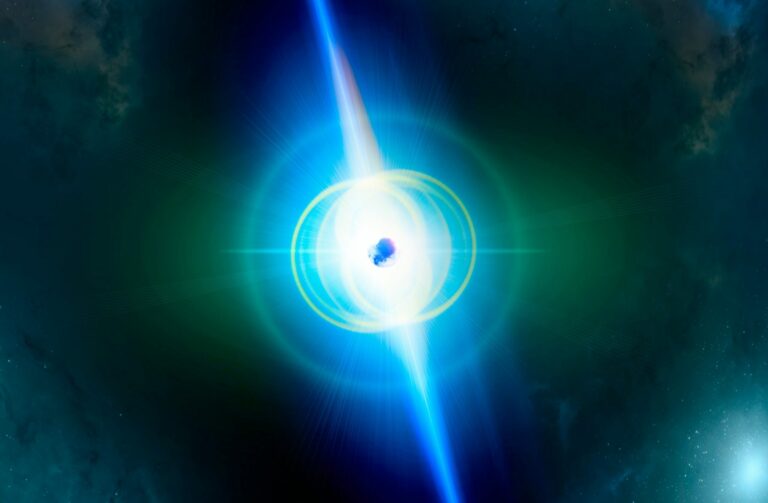An object in outer space has been emitting pulses every 22 minutes for a minimum of 35 years.
It was followed by announcing the discovery of a new cosmic mystery by researchers. The new object, GPM J1839-10, works like a pulsar; it frequently sends out powerful bursts of radio waves. But the physics of the pulsars suggests that if they are to slow down too much they stop producing if not, every pulsar that we know of beeps at least once every sixty seconds.
GPM J1839-10 pulsates with an interval of 22 minutes. We don’t know of what type of physics, or things that can fuel it.
A persistent transient
About GPM J1839-10 The GPM J1839-10 was found while looking at the galactic plane for variable sources which are invisible initially but visible next time one looks at the location. The old way to describe a flashing object is something akin to a supernova where the light output dramatically spikes due to some event. They are there at the radio end of the spectrum but they are also very brief and therefore challenging to capture. In any case, GPM J1839-10 emerged in the search in an unexpected manner: It was observed twice at a particular night of observation and each time it was listed as a transitory item. While the rapid radio burst’s energy peaked in a brief moment, GPM J1839-10 was significantly less energetic and lasted for over 30 seconds.
Subsequent observations showed that the object was repeating with an astounding accuracy to a period of roughly 1,320 seconds. It takes 400 seconds for a periodicity, and a burst can be initiated at any point of that period and last for 30-300 seconds. During its operation, the amplitudes of GPM J1839-10 vary, and sometimes it can have several sub-bursts within the initial signal.
In some occasions, a window will be cleared without any blasting. Evidence drawn from archives showed that signals were noted at the site in as early as 1988. Therefore, whatever is creating this signal is not entirely transient; the process that results in these spikes is not a single event. There is no other known object, which is capable of exhibiting this sort of behavior and this means that the list is empty.
A bad fit for anything
The closest analogue to GPM J1839-10 is a pulsar, a young neutron star that rotates rapidly and has a strong magnetic field. These objects radiate radio waves from their magnetic poles, which may not coincide with their rotation axis. Consequently, the star’s rotation can carry the poles across the line of sight from Earth, causing a flash of radio every time one of the magnetic poles aligns with Earth. However, pulsar flashes are successive and can appear in intervals of a minute to milliseconds.
More importantly, physics demands that the separation should reduce rapidly. The rotation of the star produces the magnetic field that drives the generation of the radio waves. If it starts rotating too slowly, the magnetic field will go down to the level that it cannot create strong radio waves. In other words, it becomes black if it slows down, that is why one can rarely see pulses longer than a minute. This does not rule out our neutron stars, however. Another possibility is a neutron star with a strong magnetic field – magnetar, capable of powerful flares.
However, these outbursts emit higher energetic photons and the researchers used an X-ray telescope to search for GPM J1839-10 but in vain. Moreover, magnetars are believed to rotate at a frequency faster than 22 minutes, thus they cannot be part of the candidates also. The second candidate is a white dwarf which is characterized with a high magnetic field. These are substantially bigger objects, thus they take much more time to revolve than neutron stars do. However, we have seen hundreds of them in the Milky Way and nothing like this. There is only one that has regular emissions, and it has much lower output than GPM J1839–10.
This means that even if we are to widen the list of possible origins to items that we do not understand at all, we are still left wanting. A few years prior, the same authors found another slow-repeating radio transient, GLEAM-X J162759. But GPM J2037-11 was only known to have been active for about two months, which is far from the 35-year burst of GPM J1839-10.
What now?
Well, since all possible scenarios are bad, where do we turn to?The only consolation is that they will be difficult to observe that we might have missed many of these things.
The bad news is that they are still very hard to identify. With the short-cadence burst lasting up to 300 sec and the time between the bursts, observers will either see something or nothing at all. For this reason, we would have hardware gaze at a single region of space for at least half an hour, and it would need numerous exposures for its stare periods. And that is accomplished at the cost of a very substantial investment in hardware.
Meanwhile, it is still possible to maybe pinpoint GPM J1839–10 at least to some extent to check whether there is something noteworthy in other bands. That is going to be difficult however since this is located within the galactic plane.
Nature, 2023. DOI: 10.1038/s41586-023-06202-5 (About DOIs).
Do not forget to share your opinion with us to provide you with the best posts !




0 Comments